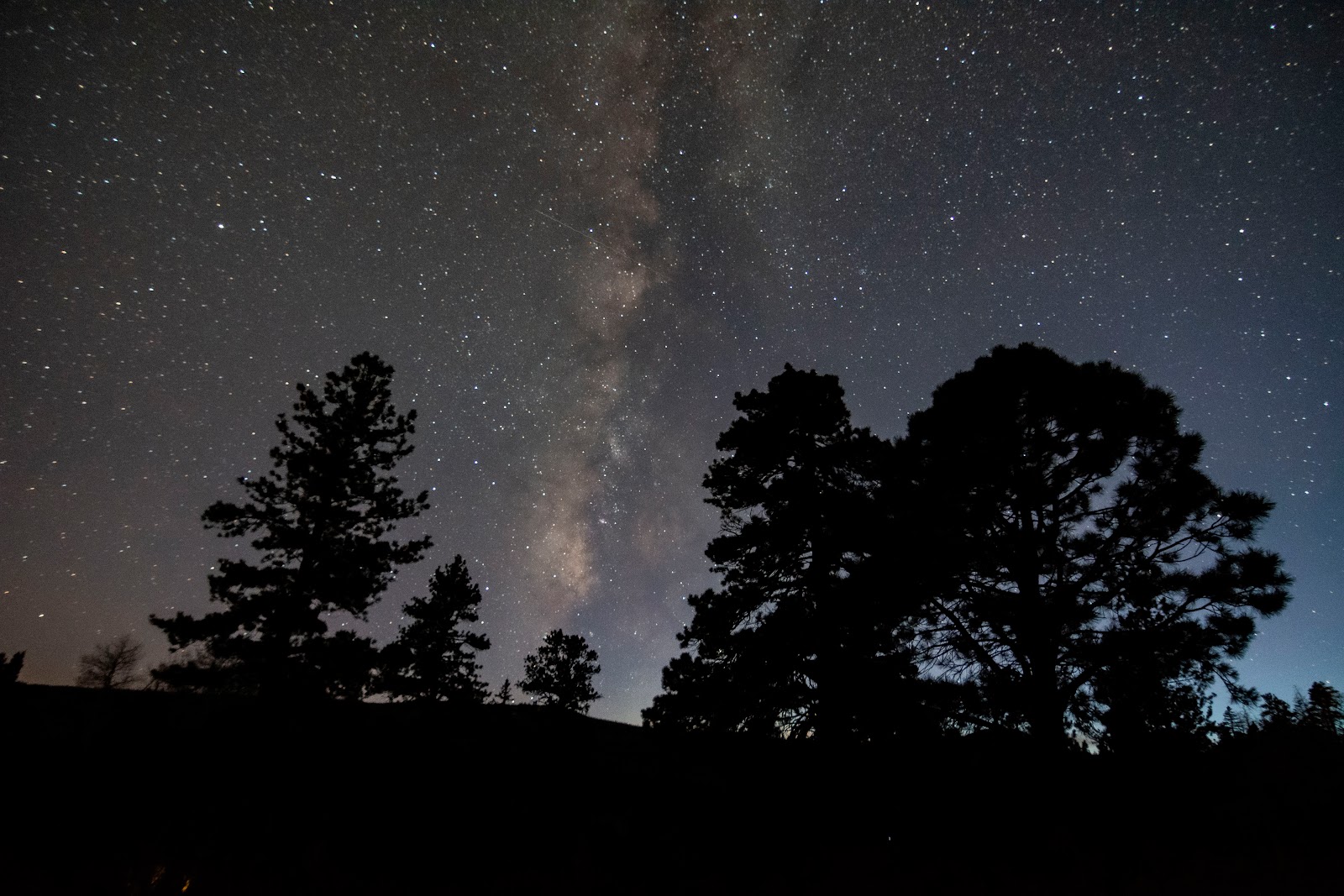Introduction
May was something else for Utahns and many others around the world. I saw and imaged the northern lights but still can't believe that I actually saw them! Utahns did experience a few nice days and plenty of cloudy, rainy days during May. Despite these stormy days, I captured many images of the Moon and Sun throughout the month.
June will be a relatively quiet month, astronomically. No major meteor showers will occur this month, but a few comets may be visible if a dark sky is available. The summer solstice occurs this month, marking the day with the longest amount of daylight and shortest amount of night—an astronomer's least favorite time of year! The highlights for June will include a planetary conjunction between Jupiter and Mercury, the Moon passing close to a few bright stars, and six planets aligning in the morning sky.
Mercury will spend the first half of June in the morning sky and will be the last planet to rise in this month's planetary lineup. On the 1st, Uranus will be just 2° from the innermost planet, but it will require optical aid to see. A few short mornings later, Jupiter and Mercury will be less than 1° apart from our perspective. A high elevation and clear view of the eastern horizon will be required to see this pairing. Mercury will reach superior conjunction on the 14th and will return to the evening sky a few days later. By the end of the month, the innermost planet can be seen hovering approximately 10° above the western horizon, shining at -0.7 magnitude.
While the other planets are lining up in the sky, Venus will be hiding in the glare of the Sun. The Earth's evil twin will return to the evening sky in July.
Mars will follow Saturn and Neptune in the morning sky during the planetary lineup in June. The Red Planet will rise close to 3:00 AM for Utahns at the beginning of the month and earlier with each passing morning. Mars may offer some surface detail through a telescope, with observations improving throughout the year as the planet nears opposition. A thin crescent Moon will pass close by the Red Planet on the 2nd.
Jupiter will be the last planet to rise on the first morning of June. By the 4th, Mercury will have sunk closer to the horizon, rising at about the same time as this gas giant. The pair will be less than half a degree from each other on this date. With each passing day, Jupiter will rise earlier, surpassing Mercury on the 4th. By the end of the month, Jupiter will rise nearly two hours before the Sun. The Moon will be close by on the 5th but may be too hard to spot due to the morning glare of the Sun.
Saturn will be the first planet to rise during June. This planet will rise nearly three hours before the Sun at the start of the month and shortly after midnight by month's end. The rings of Saturn will be edge-on from our perspective next year, so be sure to give the rings a good look in 2024. Saturn will reach opposition later this year, rising as the Sun sets. The Moon will join Saturn in the sky on the 27th when the pair is less than a tenth of a degree apart.
Uranus will rise around 5:00 AM on June 1st, being the fourth planet in the planetary lineup. This ice giant will be hard to spot in the morning glow of the Sun, but visibility will improve as the month continues and the planet rises earlier. Mercury can be found less than three degrees as the month opens, but this distance will increase with each passing day. The Moon will be just four degrees above this planet on the 4th.
Neptune will rise about an hour after Saturn and will be the second planet in the planetary lineup. Seeing this most distant planet will require optical aid. The Moon will be less than half a degree away on the 28th.

The Planets Align
Six of the seven planets will align in the morning sky during the first few days of June. Saturn will be the first planet to rise, followed by Neptune. Mars, the third planet to rise, should be easy to spot an hour or so before sunrise. Uranus, Mercury, and Jupiter will be harder to locate in the morning twilight. The best dates to view these planets will be the 3rd and 4th. Mercury will be close to Jupiter and Uranus on these dates, aiding in finding dim Uranus in the morning twilight. A camera with a widefield lens will help capture all six planets.
Comet Olbers will still be visible during June but will fall below the horizon shortly after sunset. This comet can be found in the northwest near the feet of the Great Bear, Ursa Major. Optical aid will be required to view this comet and imagers should be rewarded with a blueish tail.
On the 16th, the Moon will pass close by Spica, a bright variable star in Virgo. Four days later, the Moon will have traveled close to Antares, the red eye of Scorpius. The pair will be less than half a degree apart on this date. I like to use Antares to find the Milky Way band before twilight has left the sky.
June 02: Moon passes within 2° of Mars
June 04: Moon passes within 4° of Uranus
June 04: Jupiter and Mercury conjunction
June 04: Venus and Sun conjunction
June 05: Moon passes within 5° of Jupiter
June 06: New Moon 🌑
June 14: Mercury and Sun conjunctionJune 14: First Quarter Moon 🌓June 16: Moon passes within 2° of SpicaJune 20: Moon passes within 0.5° of AntaresJune 20: Summer SolsticeJune 21: Full Moon 🌕June 27: Moon passes within 0.1° of SaturnJune 28: Moon passes within 0.5° of NeptuneJune 28: Last Quarter Moon🌗















